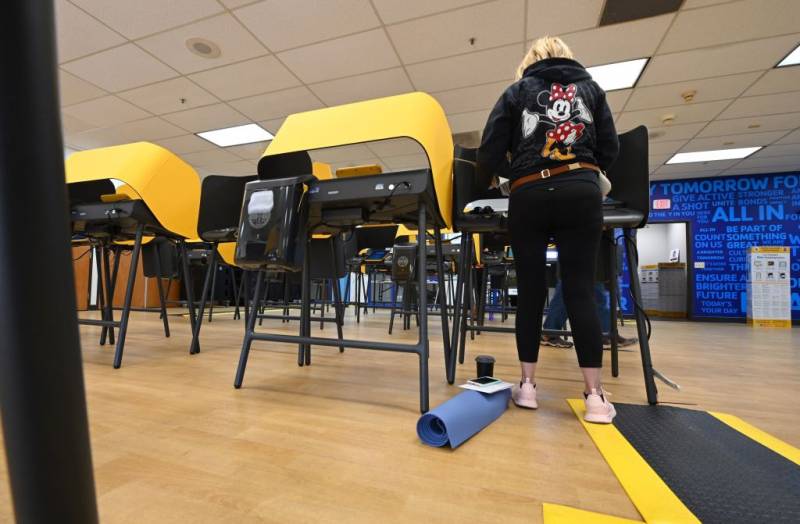The $300 million overhaul ran into extensive problems on Tuesday. Far more voters opted to cast ballots in person than officials predicted, leading to long lines. The delays were exacerbated by slow machines and a state law allowing same-day voter registration.
"In Los Angeles County, too many voters faced unacceptably long wait times," Secretary of State Alex Padilla said in a statement on Thursday. "Voters who waited patiently for hours deserve our praise for their commitment to democracy. Voters deserve better."
In a letter to Los Angeles County Registrar Dean Logan, Padilla told Logan to make plans to send every registered voter a vote-by-mail ballot 29 days before the November election. In addition, Padilla wanted him to address concerns over voting logistics, training, equipment and resources.
This is a far cry from the rather sanguine attitude Padilla expressed when KQED asked him about problems seen the weekend of Feb. 22, when he voted early in Los Angeles.
"You know, every election there's issues here and there. Maybe a late opening or, you know, the air conditioning is not working and those sorts of things. And, you know, today is no different," Padilla said.
When KQED's Saul Gonzalez noted that one voting center he just visited lacked power, printers weren't working and workers complained about a lack of training, Padilla pushed back.
"I'd rather find that out 11 days before the election than on Election Day itself. Look, here's the good news. This isn't our first go round with the Voters Choice Act," Padilla said, calling the voting experience in 2018 "overall a resounding success."
The Voters Choice Act, written by Sen. Allen and signed by then-Gov. Jerry Brown in 2016, allowed select counties to mail a ballot to every registered voter and replace polling places with vote centers, which, though fewer in number, would open early to allow ballots to be cast in the days leading up to Election Day.
The law applied differently to Los Angeles County, allowing for a hybrid of mail and in-person voting at vote centers. Voting officials in L.A said that switching to an all-mail election would poorly serve students and those with shifting addresses in a county with low percentages of early voters.
"L.A. raised a lot of concerns. They were concerned about logistics, they were concerned about funding," Allen said. "Ultimately, we should have been more aggressive with them and I’m trying to rectify that with this bill."
Allen said the proposal, which hasn't been put into print, would give the county the option of mailing more ballots or opening more vote centers.
"We’d give the county the choice, but we’d actually hope that the county would do both," he said.
The Voters Choice Act came without extra funding for counties, and Allen said the state would likely need to help Los Angeles expand options for the fall.
"I will certainly advocate for the state to step up and assist," he said. "I think the county will have to put up some money and I think the state should help out as well."
Los Angeles had to deal with a rare confluence of changes: a new, untested voting system; voting centers replacing neighborhood polling places; a competitive and fast-changing presidential primary that caused voters to hold onto vote-by-mail ballots and bring them in; and complicated rules that allow No Party Preference voters to vote in the Democratic primary if they requested a crossover ballot.
All those things proved to be overwhelming.
"It was definitely a perfect storm situation, especially for Los Angeles, where not only were they conducting a presidential primary election, which, you know, is semi-closed and has never gone smoothly in Los Angeles and all the years I've been watching elections," said Kim Alexander, president of the California Voter Foundation.
"I think that we are better off using less technology in the voting process and not more. That was my big takeaway this election," Alexander added.
Los Angeles wasn't the only county experiencing problems with voting Tuesday. In Fresno County, one of the jurisdiction that switched over the vote center system, Registrar of Voters Brandi Orth reported problems Tuesday morning with the ability to connect to state's voter database.
"Five to seven of the Secretary of State’s servers had to be rebooted," she told reporters.
According to the Secretary of State's Office, 15 counties had problems with "connectivity" to the state voter database, including some counties that were not ones which, like L.A., had moved to the regional vote center model.
